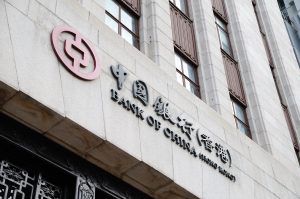China’s regulators issued the “14th Five-Year Plan for Financial Standardization.” The plan sets quantitative targets on the number of financial standards issued by 2025 in a broad set of areas, including fintech, green finance, securities and futures, and international finance. The standards aim to bolster policy goals, such as inclusive finance and rural revitalization, green economic development, promotion of new technology, data protection, and digital currency rollout. The goals are laudable but are unlikely to resolve the biggest financial constraint: banks’ strong preference to lend to state-owned enterprises, which comprised about one-third of lending in 2019.
The financial standardization plan aims mainly to support domestic circulation as part of China’s “dual circulation” policy, which conceives of the domestic and the international as separate economic realms meant to run in conjunction. Standardization is viewed as an essential component of domestic supply-side structural reform in the financial sector. The plan calls for international financial standards to be adopted, including derivatives standards such as the Unique Product Identifier, Unique Transaction Identifier, and Key Data Elements.
The plan views digital risks and guardrails as a key area to address. This may be the most innovative aspect of the plan, with a focus on laying out fintech standards, including data and network rules. Financial data is to be protected within big data collection, analysis, and storage. Standards surrounding new technologies and their use in financial networking, such as quantum communication and lossless networking, are to be created. Development of digital currency standards is also a focus, with the intent to ensure non-forgery, non-repudiation, and non-repeatable transactions for the new sovereign digital currency.
While the plan is useful in continuing to regulate China’s growing financial landscape, it does nothing to alter China’s trajectory of channeling funds to the state sector. Bank lending to state-owned enterprises has surged under Xi Jinping, rising from less than 15 percent in 2014 to over 30 percent in 2019. This has blocked funding to small and medium-sized enterprises and prioritized policy lending over the private economy.
The emphasis on lending to support policy measures has also led to the buildup of excessive debt among policy-favored industries, notably real estate. Defaults by major real estate developers Evergrande, Kaisa, and Shimao pointed to the unruly expansion of real estate firms that supported the growth of fixed asset investment for years before regulators reined in leveraging risks. The Three Red Lines regulations that were outlined in August 2020 have attempted to curb uncontrolled lending in the property sector after the fact but have failed to curb the biggest source of risk: lending to support government policy aims.
Under the strategy of lending to support government policy, banks and other financial institutions have preferred to lend to enterprises that carry out state mandates, such as buildup of infrastructure, investment in supported technologies, and poverty reduction. While financial support of policy makes sense, especially for China, often financial risks and economic efficiencies are overlooked in the process. This is how local governments and heavy industry became over-indebted, only to be regulated after they overindulged in easy loans for years.
Rather than opening up to market forces, as China had done for some time before Xi came into office, China’s financial sector is moving in the opposite direction, ignoring risks and opportunities in favor of political and economic safety. China’s debt-to-GDP ratio reflects the inefficiencies associated with such non-market moves. The statistic stood at 285 percent in the third quarter of 2020. About half of the debt is accounted for by state-owned enterprises. SOEs also defaulted on $11.1 billion of debt in 2020, accounting for 51 percent of all defaults.
The Financial Standardization Plan does not support China’s movement away from a state-owned economy. This trajectory coincides with U.S. calls for a more level playing field in its competition with China. The Trump administration had been especially vocal in complaints regarding China’s use of subsidies to support policy-favored firms, and China’s divergence from Western market traditions only underscores the commitment of the Xi administration to China’s own economic model. The question remains, in the face of high debt levels and inefficiencies, will China’s model remain successful?































